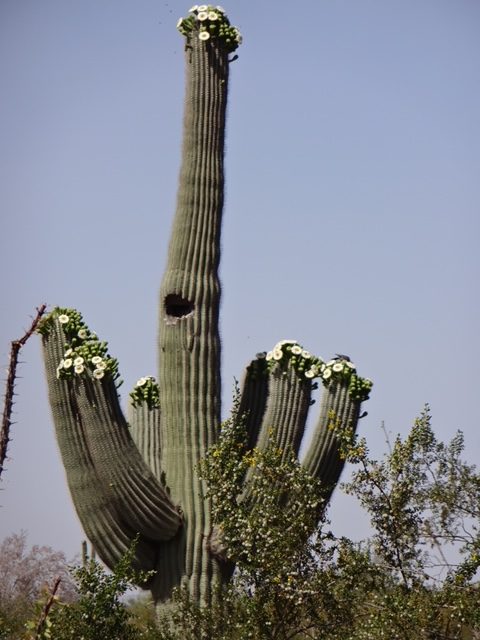
The Saguaros Are Blooming!!
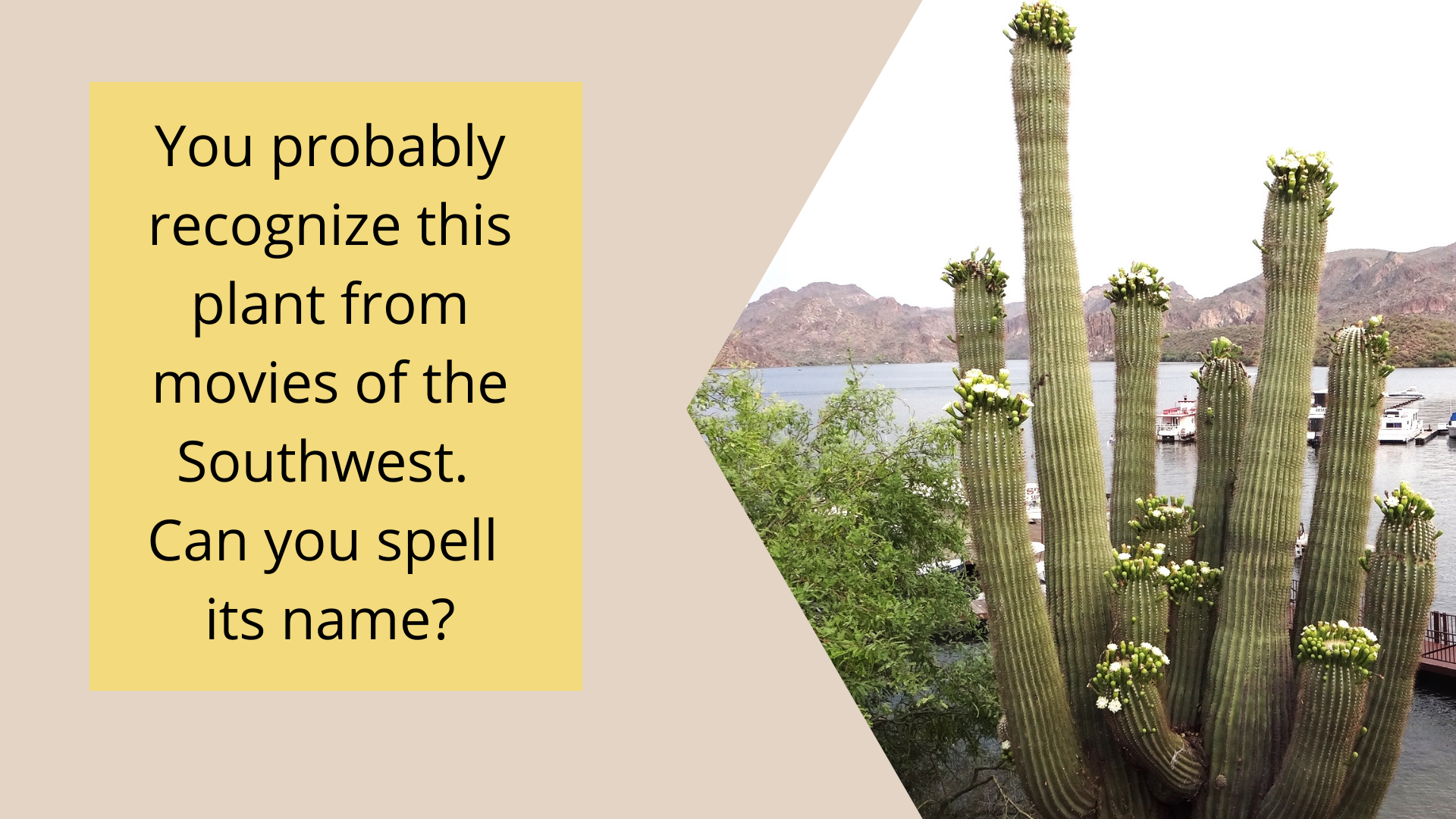
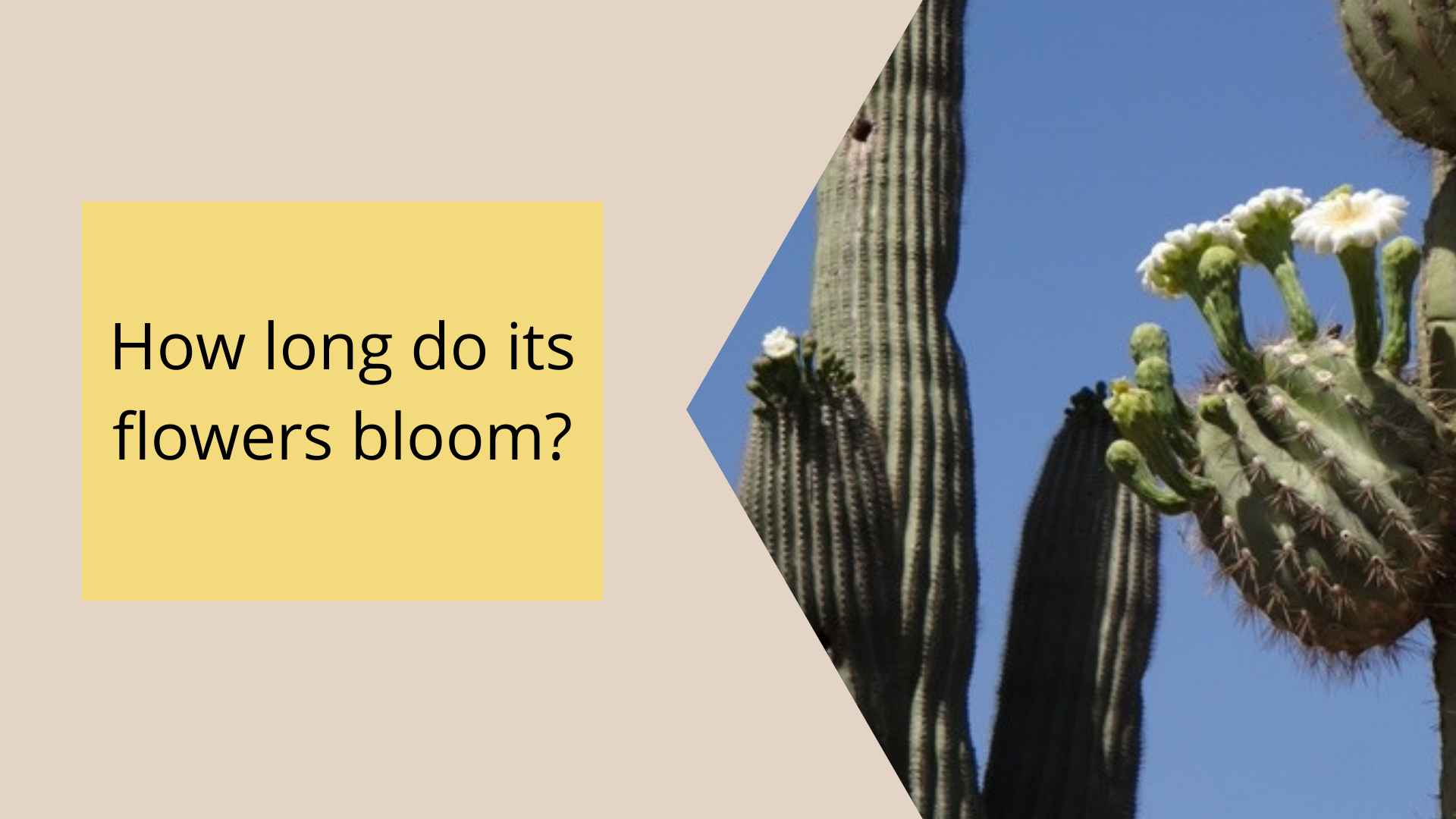
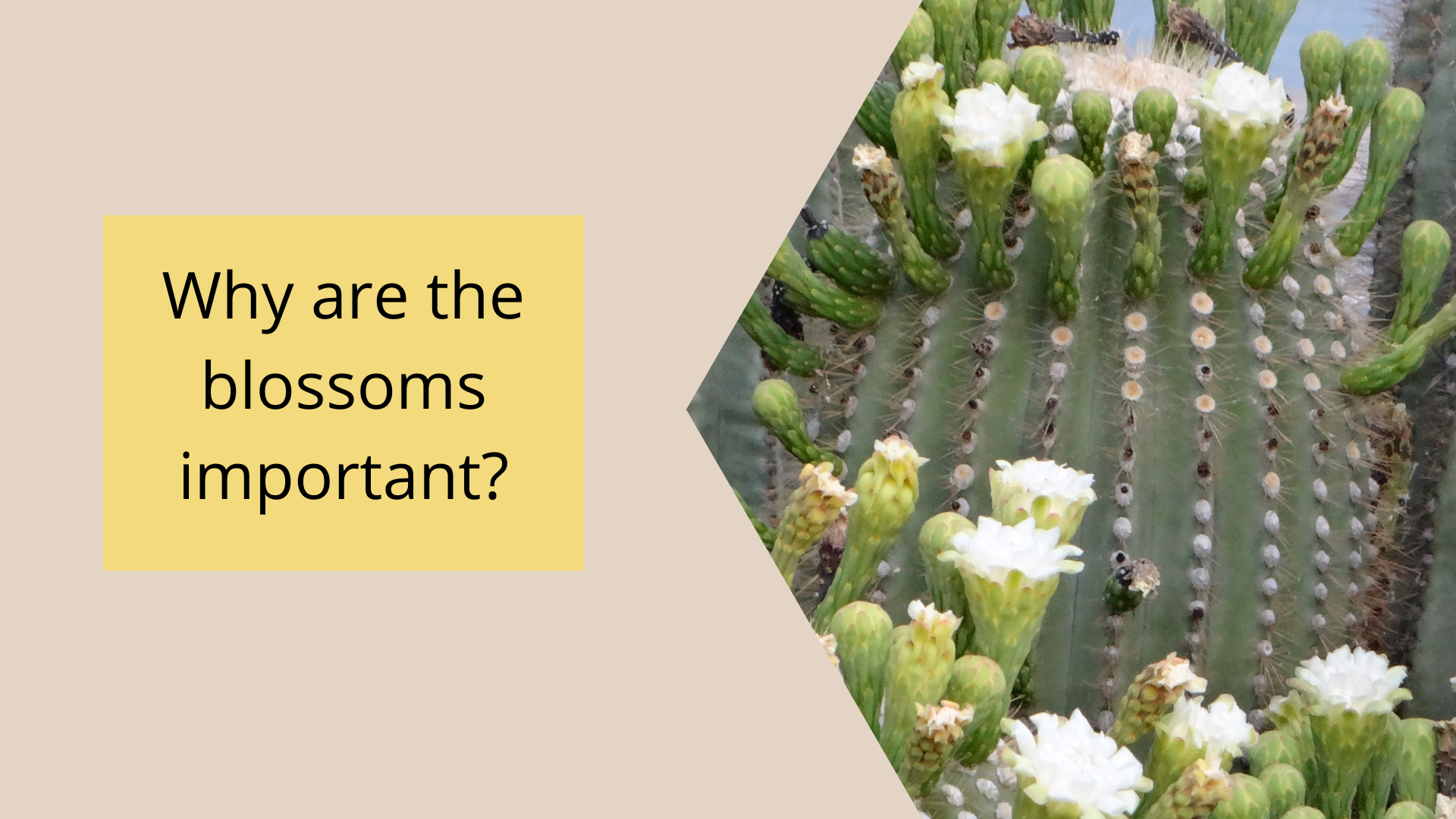
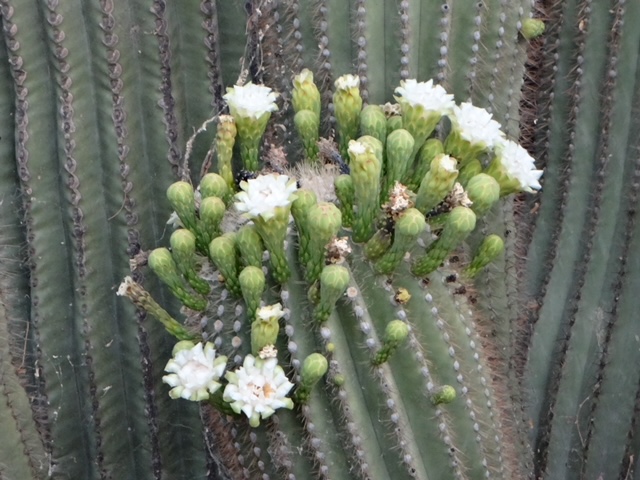
If you’re in Phoenix from late April to early June, you can enjoy the blooming of the Saguaro cacti. Clusters of milky white blossoms appear as caps on the tops of the cactus arms, sometimes looking like bridal bouquets. There is something joyful about the flower-bedecked Saguaros. It’s as though they are throwing a party and you’re invited. Maybe that’s why the Saguaro blossom was selected as the state flower of Arizona.
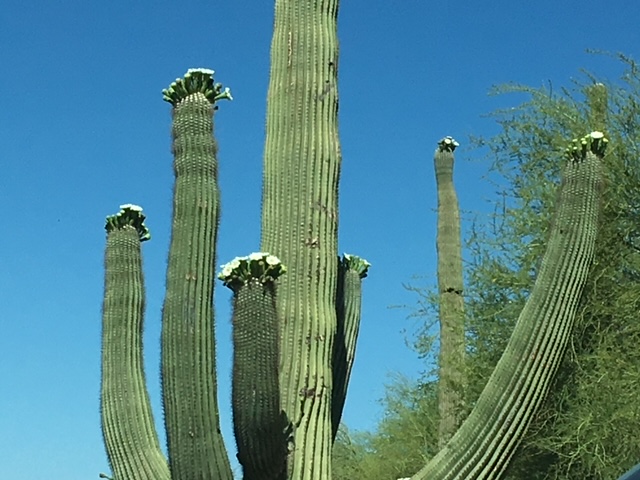
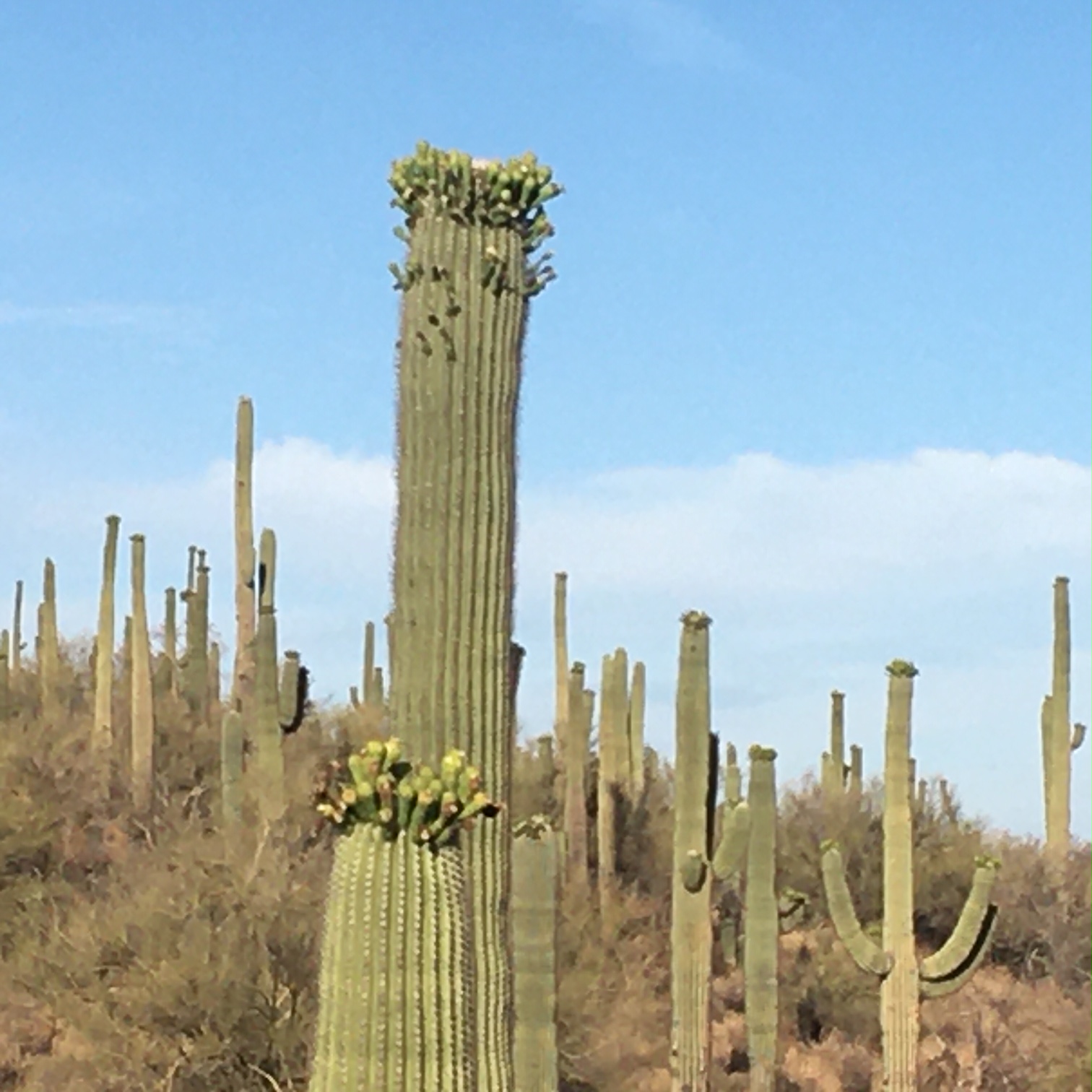
Almost everyone recognizes the Saguaro Cactus – it’s synonymous with the southwest desert. In fact, it only grows natively in the Sonoran Desert of Arizona and northern Mexico. Its scientific name is Carnegiea Gigantea. The cactus is basically column shaped. Most of them grow branches or arms which usually curve upward, but some never grow arms at all.
Saguaros grow from seal level to 4000 feet. They don’t like cold, however, so at the higher elevations, they usually stay on the sunny side of the hill.
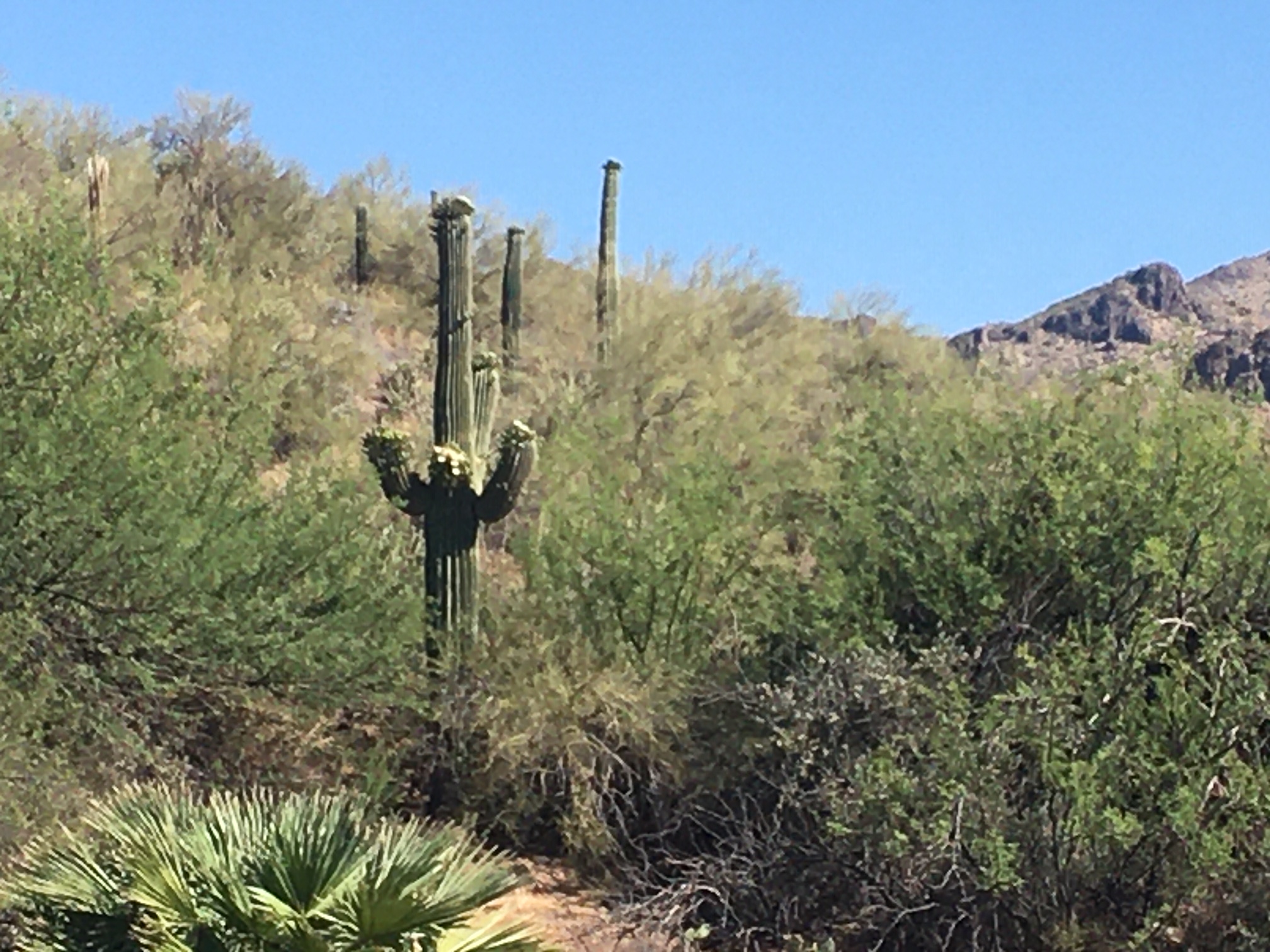

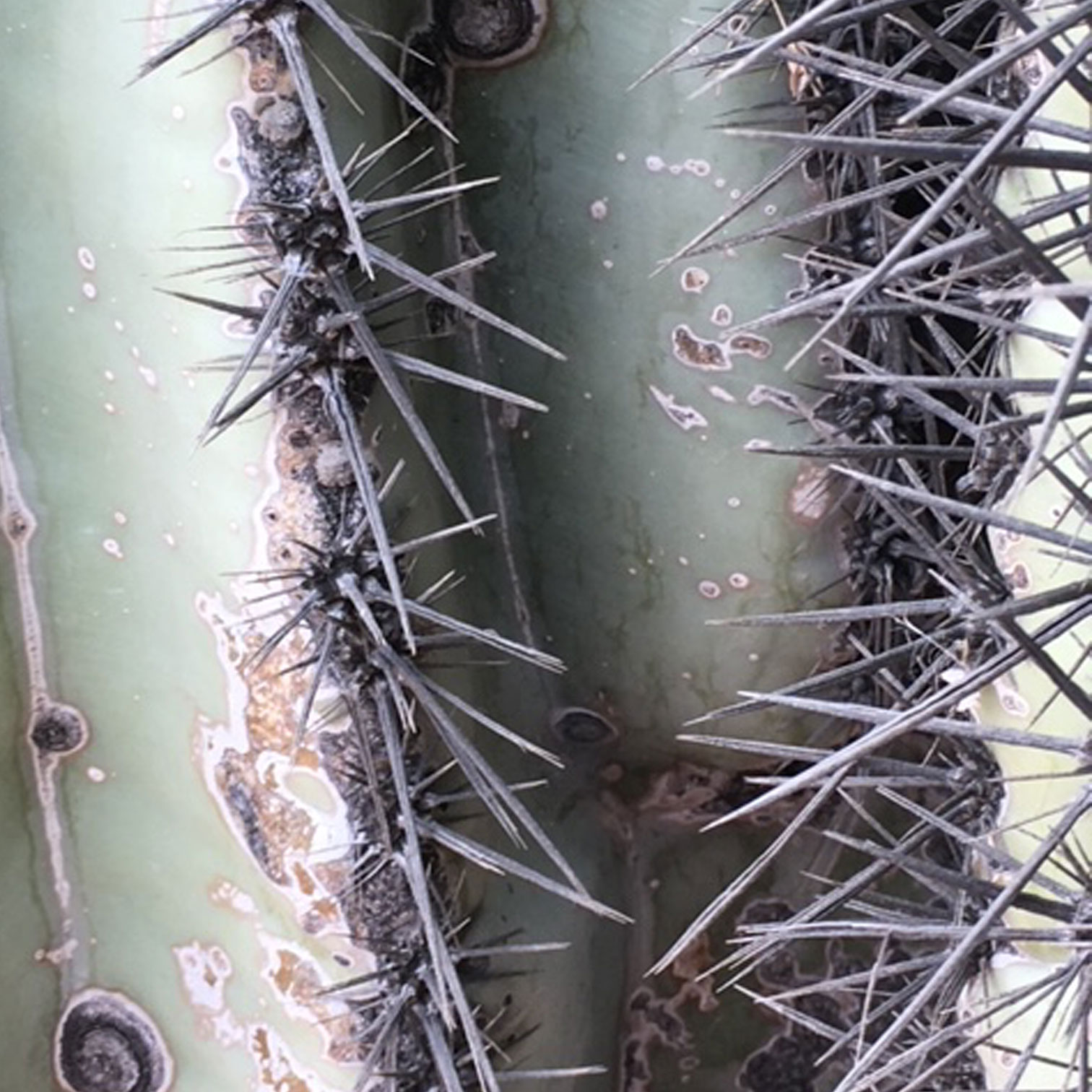
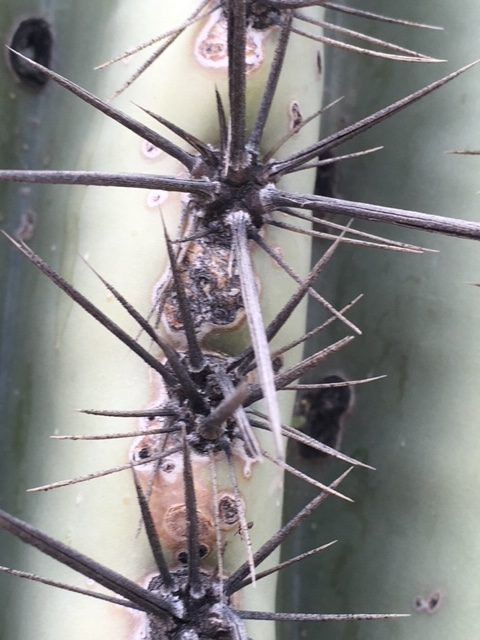
Saguaros are designed for desert survival. Their outer skin is covered with a thick, waxy coating which waterproofs them and minimizes water loss. They do an amazing job of repairing themselves if injured. They also have hard spines and flexible bristles for defense and protection.
Most amazing is their root structure. There is only one central root which goes down 2 to 5 feet into the ground. The other roots are only 2 to 5 inches long, but they create a maze-like system of roots which can extend out as far as the cactus is tall. These roots are very close to the surface to collect whatever rain that falls.
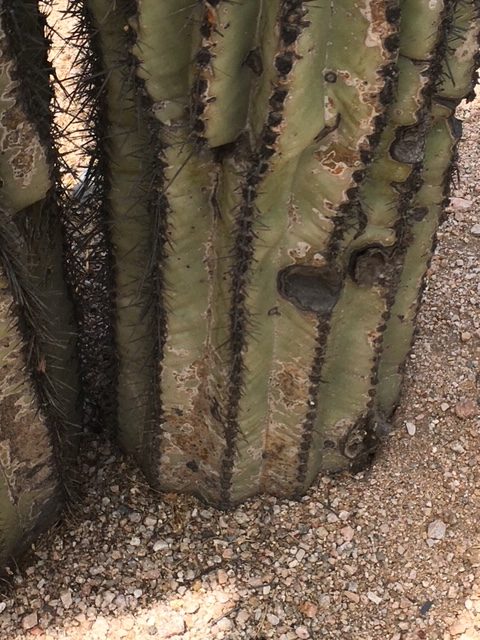
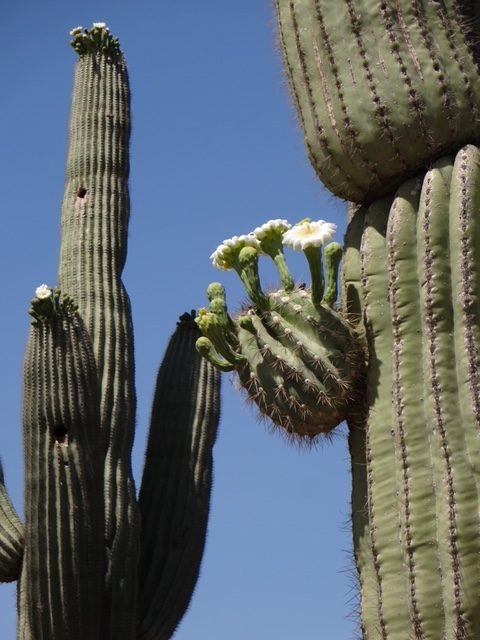
When the root system pulls the water in, the cactus stores it for future use. The inside flesh of the Saguaro is sponge-like. The outer skin is somewhat pleated, so as the flesh fills with water, the outer skin can stretch like an accordian to accommodate. All that water makes the cactus very heavy. A full grown, full of water Saguaro can weigh over a ton. Sometimes they fall over from their own weight.
Saguaros are very slow growing. Maybe they’re in no rush because they can live up to 200 years. They often reach heights of 40 to 60 feet tall, but a ten-year old plant may be only 1 and ½ inches high. The tallest Saguaro on record reached 78 feet.

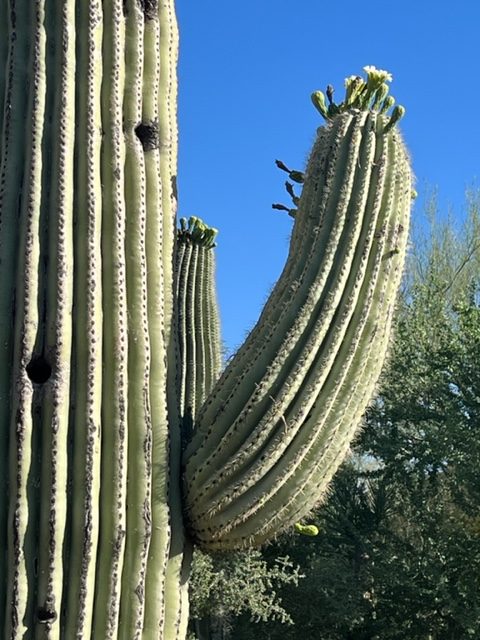
Saguaros are the home for many bird species, although the Gila Woodpecker and the Gilded Flickers are the ones who actually tear into the Saguaro’s flesh to make their nests. When they move out, others move in. But it doesn’t bother the Saguaro which seals off those nesting cavities. Native peoples used the sealed nesting holes from dead Saguaros as canteens.
The blooming of Saguaros is essential to the birds, bees, and bats of the desert. Each Saguaro may produce as many as 200 blossoms, opening two or three a day over the season. Each single flower only blooms for a day and then it dies, to become delicious red fruit. But because there are so many flowers and each one blossoms, it seems as though the Saguaro is in bloom for the entire month.
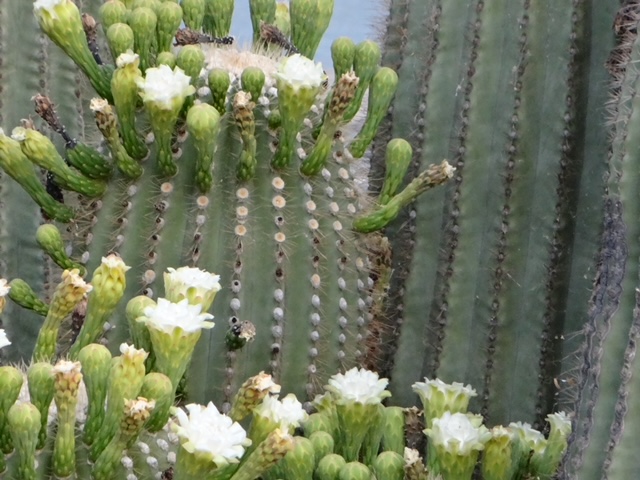
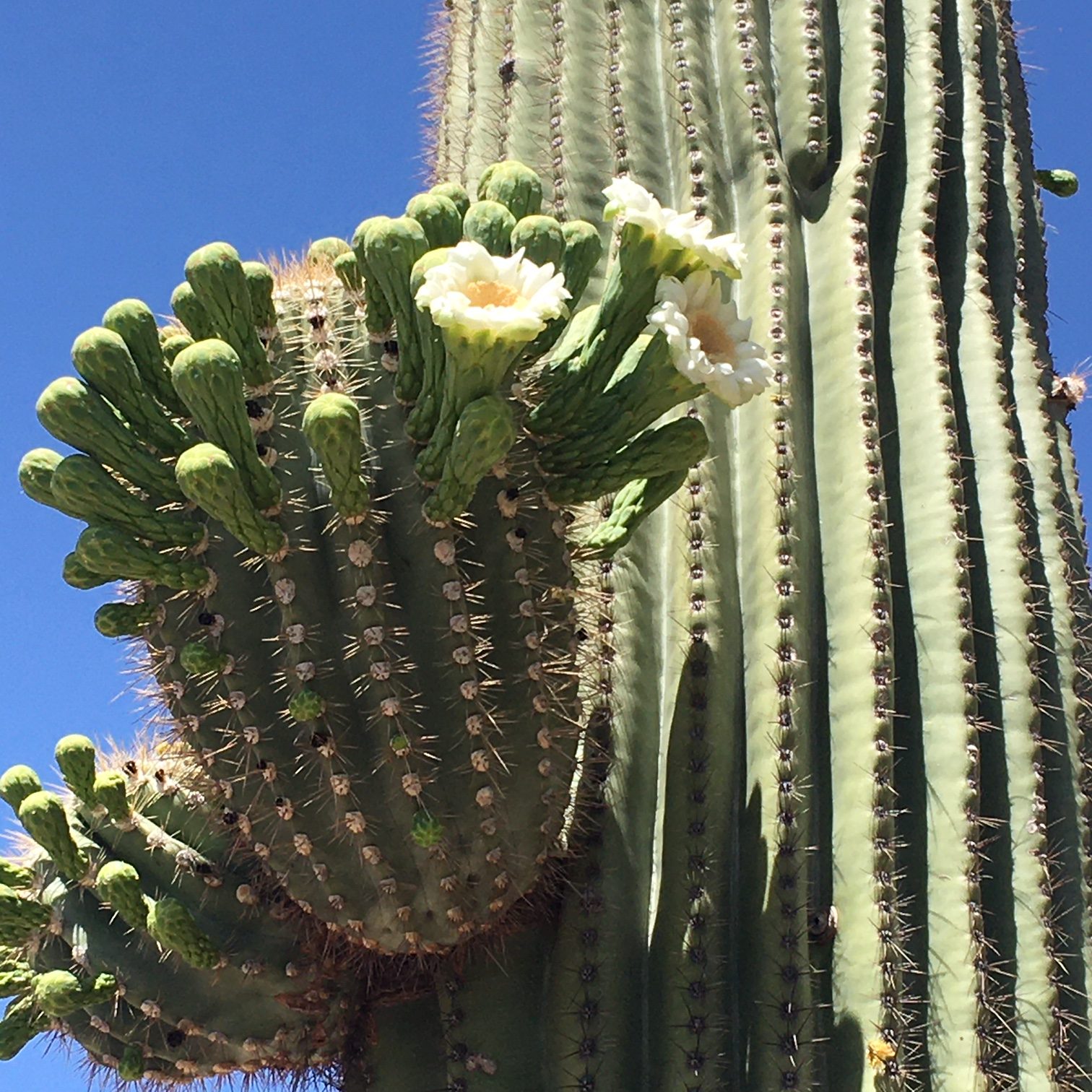
The blossoms have a sweet nectar which is attractive to birds, bees, and many varieties of bats. The bright red fruits are also juicy and tasty, and the bats especially carry them long distances and deposit their seeds to grow new Saguaros. A single fruit may have as many as 2000 tiny seeds. Historically, the fruits were also important for both animals and humans because they grow during the hot summer months when most other plants have stopped blooming.
Saguaros are wonderful cactus anytime, but especially when they are blooming. The Tohono O’Odham people recognized the Saguaro as just a different type of humanity and made them respected members of their tribe. I think they have the right idea!
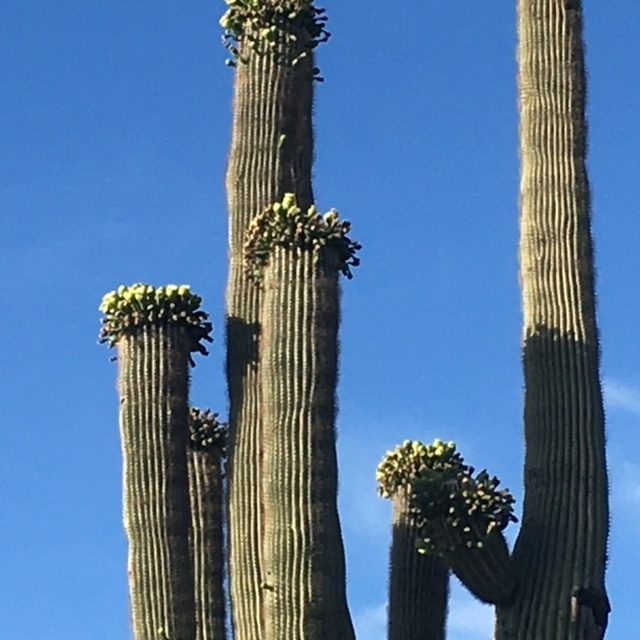
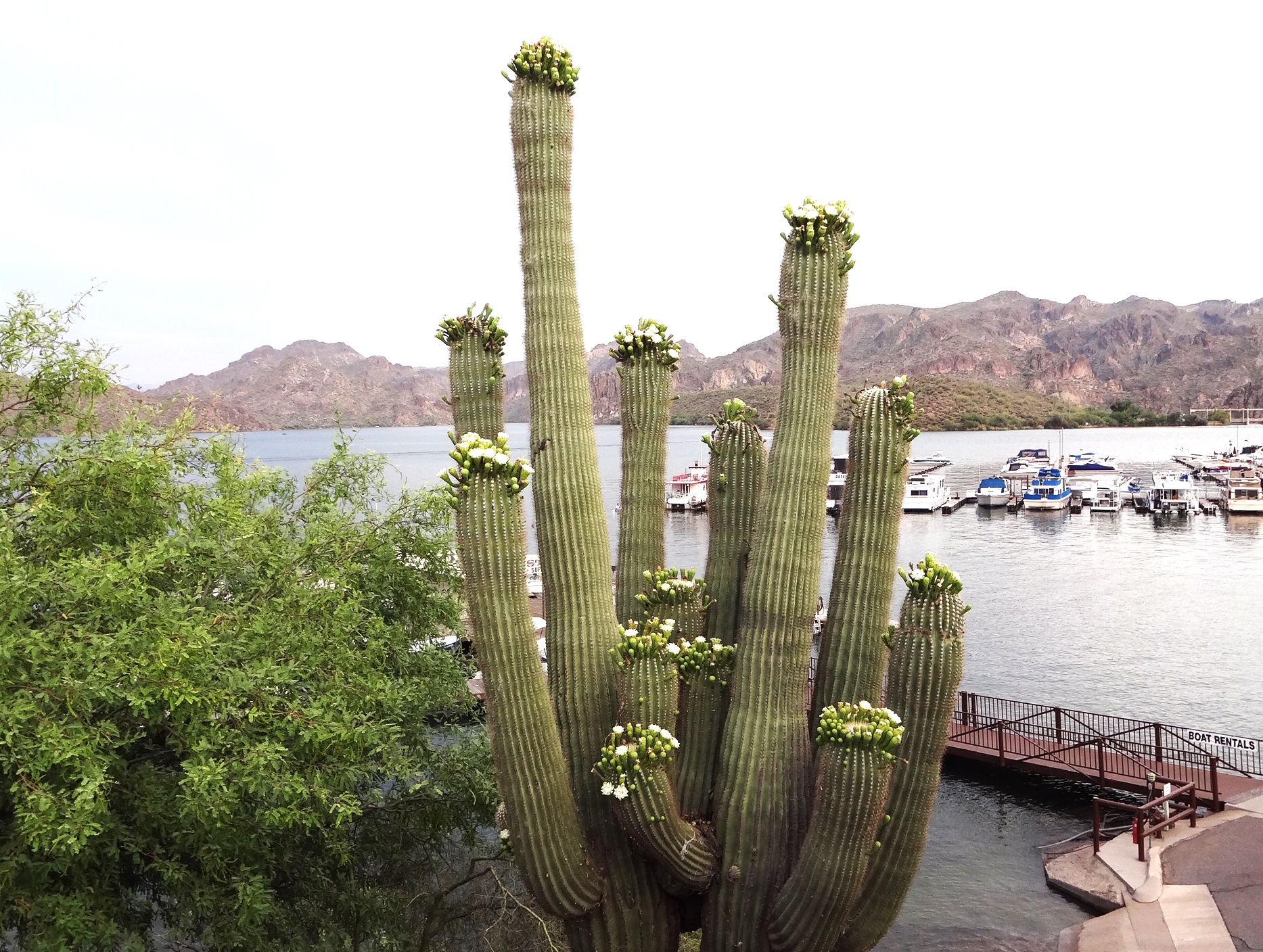
Answers to Questions at Top
Question:
You probably recognize this plant from movies of the Southwest. Can you spell its name?
Answer:
Saguaro (pronounced Sa-wah-row)
Question:
How long do its flowers bloom?
Answer:
Each flower only blooms for one day, but usually only 3 or 4 bloom each day, and one Saguaro may have up to 200 blossoms.
Question:
Why are the blossoms important?
Answer:
The blossoms are important because they turn into juicy fruits with thousands of tiny seeds. They feed birds, bees, bats, animals and people at a time of year when nothing else blooms. They are also the State Flower of Arizona.
